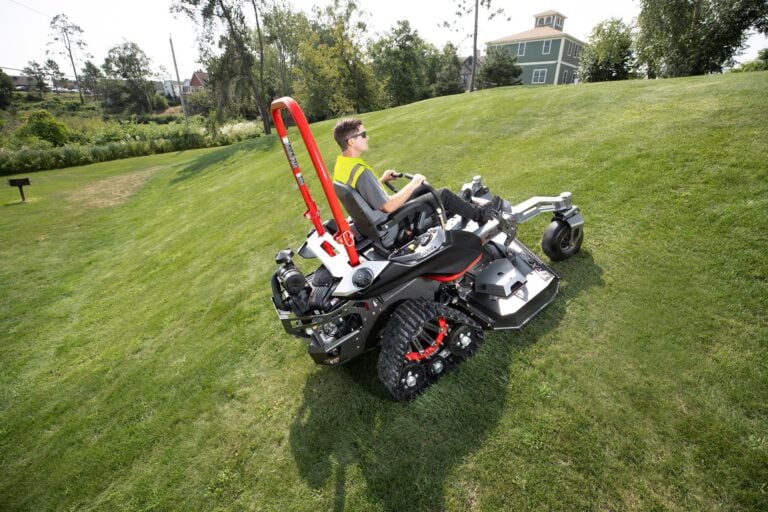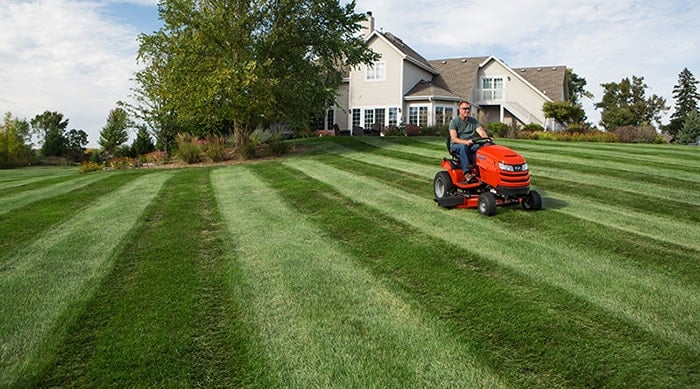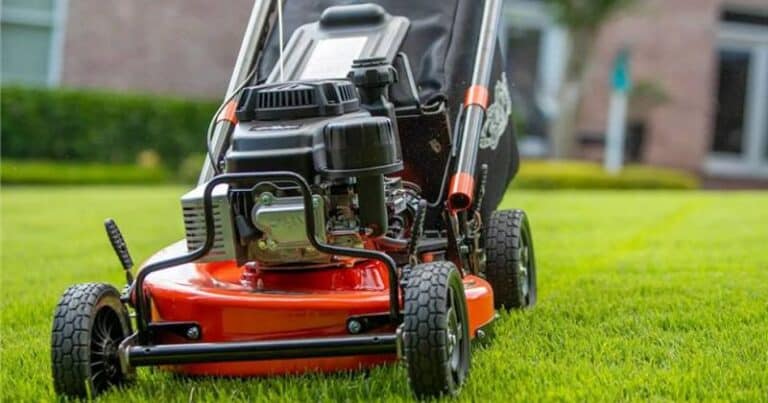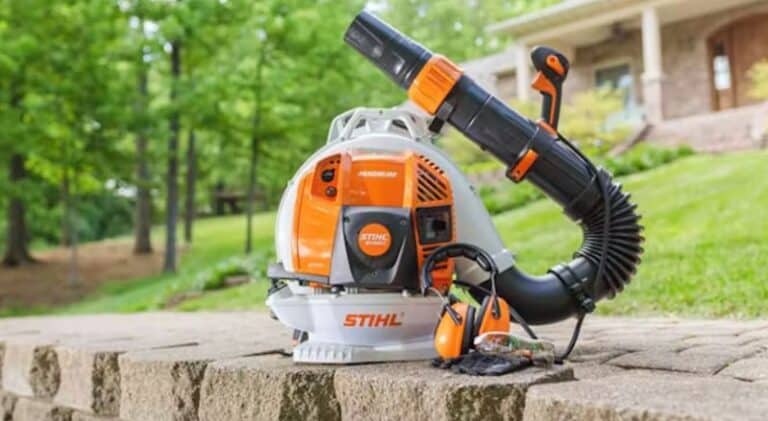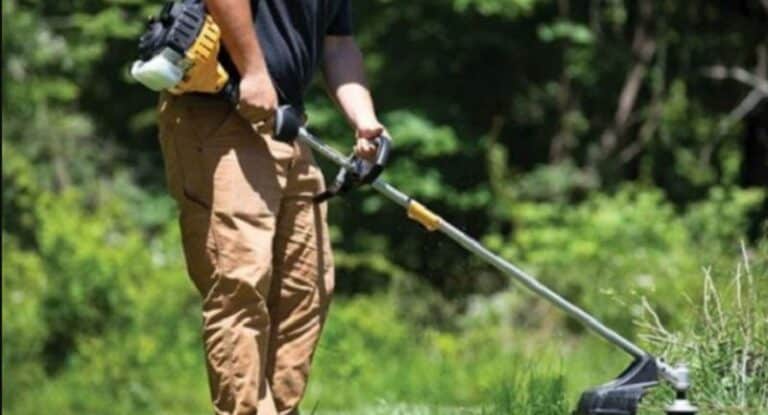A Definitive Guide to Sharpening Lawn Mower Blades

Taking care of your lawn mower is an important maintenance step that can not only help you improve your lawn’s appearance but protect it and your family’s health at the same time. One of the most critical steps in maintaining your lawn mower is to sharpen its blades to ensure that they operate smoothly. Sharpening lawn mower blades isn’t necessarily a complex task but does require some skill and care. This complete guide will help you understand all you need about sharpening lawn mower blades.
Your 6-Step Guide to Sharpening Lawn Mower Blades
These six simple steps will help you sharpen lawn mower blades quickly and efficiently. They’ll also give you the hands-on assistance necessary to improve your overall mowing experience. Try to follow these steps only if you feel comfortable handling what can be very sharp blades, even when dull.
Step One: Prepare Your Mower
Take the key out of your mower or disconnect its battery to ensure that it doesn’t start while you work. You may also remove the gas from the machine, as well as the oil. If you do not remove these fuels, make sure that you turn your mower over with its air filter and carburetor side up. Doing so keeps gas and oil from spilling everywhere and causing serious contamination risks in your yard.
Step Two: Detach the Lawn Mower Blade
Flip the mower to its side and unscrew the nut holding it to the mower. Keep your hands away from the blades while you work to avoid getting cut. Place these nuts in a plastic container or in your pocket to ensure that they don’t get lost while you work on removing your blade. Remove the blade from the mower and take it to your work area, where you can easily sharpen it.
Step Three: Prepare Your Blade
When removing your blade, spray paint the bottom side to ensure that you install it properly. Spray-painting the bottom gives you a guide on how to put it back on the mower when you’re done. Carefully remove the blade by wearing gloves and holding the dull sections of the blade. Even a dull lawn mower blade can cut your flesh easily, so handle it with care to avoid serious problems.
Step Four: Sharpening Your Blade Properly
Clamp your blade into a vice and use a sharpening file to sharpen the blade edge properly carefully. Hold your file at a 45-degree angle when sharpening to get the best results. When sharpening with your file, you may need 50 or so strokes to sharpen it fully. Note that you can also use an angle grinder to sharpen your blades to increase your speed. Use this method only if you feel comfortable sharpening.
Step Five: Put the Blade Back On the Mower
Hang your blade from a nail to see how well it is balanced. It shouldn’t dip at all, and if one side does, file a bit more off that side to ensure that it is safe to put back on your mower. Place your blade back on the mower according to the spray paint, i.e., install the blade on with the paint down. Tighten the screws down to hold the blade in place. Make sure they are fully tightened before starting up your mower.
Step Six: Test Your Mower
After putting your blade back on, you can reconnect your mower battery and fill it with gas and oil if you removed them. Try your mower to see how well the blade operates. If it shakes or operates awkwardly, or doesn’t react to your controls, adjust it carefully, following the safety steps mentioned above. Doing so can help you get a better overall mowing experience.
The Benefits of Sharpening Lawn Mower Blades
Regularly sharpening your lawn mower blades is essential if you want to keep your mower operating smoothly and efficiently. People who cannot pay the proper attention due to their mower may cause unnecessary operational problems that could affect how well they mow their lawn. Even worse, they could seriously damage their mower and even kill their grass and other plants.
These are just a few reasons you need to give your lawn mower blades a little TLC and regularly sharpen them. Doing so not only saves you money by avoiding wear and tear on your mower but can help it last longer and cut your grass better. The following benefits are all reasons why the EPA strongly suggests steps like sharpening your mower blades to create a healthy and safe lawn.
Protects Your Lawn
Did you know dull blades will rip and tear your lawn rather than cut its grass blades? That ripping and tearing might seem to do the job initially, but a smooth and efficient cut is much healthier for the grass. A fully sharpened blade cuts effectively through the grass and lets the blade grow effectively. Tearing at the grass with a dull blade damages the roots and may even pull them out.
Sharpening lawn mower blades avoids this problem and keeps your grass safer and healthier. This means that your grass will not only be cut more evenly but will also live longer. When properly sharpened and maintained, your grass may live for decades with minimal issues. Sharpening lawn mower blades is just part of this necessary and beneficial process for your grass.
Minimizes Lawn Diseases
Is your lawn suffering from serious diseases that affect its overall health? There’s a good chance that you aren’t mowing your lawn correctly. Dull blades can tear grass blades, as mentioned above. However, all that tearing can open the grass to serious infection from bacteria. Various grass-based diseases may even spread to other plants in your yard and cause serious health issues.
Sharpening your blades prevents this issue by ensuring you cut your grass smoothly and efficiently. The clean cuts provided by sharp blades heal quickly and minimize the risk of bacterial infection. Just as importantly, it can minimize the risk of your grass blades drying out, which is a common issue that may damage them in the long term.
Improves Grass Appearance
Regularly sharpening lawn mower blades can improve your grass appearance in many ways. For example, sharper blades mean that you’ll cut more effectively. As a result, your grass won’t get nearly as long as it would otherwise. Long grass is not just an ugly look for your lawn but can cause your grass to dry and yellow, giving your lawn an uncomfortable burned-out look you want to avoid.
Dull blades will tear your grass (as mentioned), making it look uneven and unattractive. That tearing also opens it up to rotting and drying problems that may further affect its appearance. Simply put, sharpening lawn mower blades provides your lawn with the safe and effective cut needed to look great for many years to come.
Enhances Your Mowing Experience
Have you ever mowed the same stretch of grass multiple times just to make your lawn look incredible? This problem typically occurs when people don’t properly sharpen their blades. Sharpening lawn mower blades ensures that you can cut grass smoothly and effectively. It also decreases how much time you spend mowing, meaning you can return to your relaxing day with minimal fuss.
Just as importantly, sharper blades can make your mowing experience safer. Why is that the case? Rather than having to consistently pass over the same spot repeatedly (either with a rider or pusher mower), you can cut your grass quickly and effectively. As a result, you avoid the risk of tipping your lawn mower or accidentally getting hit by the blade while you’re cutting.
Know When to Sharpen Lawn Mower Blades
When is the best time to sharpen your lawn mower blades? There are a few different guidelines to consider here. First, the general rule is that you should sharpen your blades for every 8-10 hours of mowing you perform with them. That doesn’t mean from when you turn on your mower to when you turn it off. Instead, it indicates the actual cutting time with the lawn mower itself.
For example, let’s say that you schedule one hour to mow your lawn every Sunday. It takes you 10 minutes to fill it up with gas, check the oil, and do other maintenance checks. You then get on your mower, drive it around a bit, let the engine run, and feel out its control. After 10 minutes of that, you start mowing. Those 20 minutes don’t affect your blade; you should only time yourself from that moment. So if it takes you a further 40 minutes to mow your lawn, log 40 and not 60 minutes.
Furthermore, you may not constantly use your blades when cutting your grass. For instance, you make lift the blade at certain points to get around things like rocks or stumps. Do you have to time those brief moments? Probably not, but the few seconds they take off your mowing time probably don’t matter much in the long run for your overall blade-sharpening needs.
In this timetable, you should probably sharpen your blades every 12 to 15 mows. Below, we’ll give you some in-depth tips to help ensure that you sharpen each blade properly. While our step-by-step guide gives you the information you need for this fundamental process, our tips ensure you don’t make any common mistakes that often worsen this process.
Important Tips to Remember When Sharpening Lawn Mower Blades
If you are interested in sharpening lawn mower blades and want the best results, follow the tips suggested below. We did careful research to find the best ways to improve this process and give you the best overall experience. Just as importantly, these tips ensure you don’t damage your mower or your lawn and keep your grass looking as attractive as possible.
Tip One: Hold At the Proper Angle
When sharpening, it is critical to hold your lawn mower blade at a 45-degree angle. Though we touched on this in the sharpening steps, we thought it was important to emphasize it again here. Simply put, a 45-degree angle provides the best approach for sharpening your blades and ensuring an even cut. While you can go as low as a 30-degree angle, keeping it at 45 whenever possible is best.
Tip Two: Always Sharpen in the Same Direction
When sharpening lawn mower blades, it is critical to always move in the same direction. Sharpening in two directions can cause wear and tear on the blade, which will minimize your sharpening’s effectiveness. Just as significantly, it may even dull the blade further and cause more problems than it’s worth handling. Sharpen along the length of the blade from the base to the tip for the best results.
Tip Three: Avoid Sharpening On Both Sides
While you might think that sharpening on both sides of your blade is a great idea, it is typically the best way to make it duller! Instead, you need to sharpen along the cutting edge and carefully consider its overall direction. Sharpening lawn mower blades on both sides will wear them down and dull them quickly. Sharpening on one side ensures a smooth cut and keeps your blades effective.
Tip Four: Knowing When It is Sharp Enough
While sharpening your blade, stopping when you’ve given it a sharp enough edge is essential. You rarely have to sharpen more than a few minutes to get significant results. Very dull blades may take longer, particularly if they’ve been damaged by poor past sharpening attempts. Stop when you’ve reached adequate sharpness and put your blades back on your machine to get back to work.
Tip Five: Using an Angle Grinder Safely
Angle grinders provide the best and most effective way of sharpening your blade. However, you should be very careful when using an angle grinder. Wear goggles and gloves to minimize getting cut by any flying metal from the grinder. As suggested above, make sure that you don’t grind for too long. Your blades really only need a little sharpening to cut properly. Grinding too long may just damage them.

